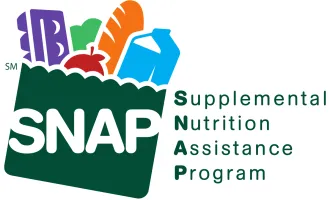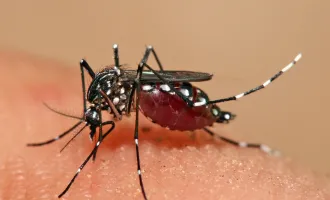Science Blogs by UCSF Students Gain Traction
Whoever said that scientists aren’t good communicators? At UCSF, students from all types of graduate programs are using their skills outside of the classroom, clinic and laboratory to communicate their ideas to a wide audience of followers.
Using a variety of creative media, including radio, video, blog posts and cartoons, these UCSF students (and one recent alum) help translate scientific research into understandable and even exciting narratives.
While their approaches are unique, each provides an entertaining way to stay well- informed about cutting-edge health news. Here are four outstanding blogs created by UCSF students and alum that are worth checking out:
Youreka Science
Science sometimes gets a bad rap for being dry, dense and esoteric, and one common challenge with science education is finding understandable and exciting ways to communicate breakthroughs in scientific research.
Youreka Science, started by UCSF Biomedical Sciences PhD student Florie Charles, may offer a solution. Using visual story-telling through whiteboard drawings, Youreka Science illustrate scientific advances outlined in recent journal articles in a way that’s understandable to audiences ranging from high school to PhD level.
“We want to empower people by educating them about their health,” says Charles, “How diseases affect us and what we’re actively doing to treat them — by encouraging critical thinking and promoting the scientific method, and by bringing awareness to the importance of funding biomedical research at all levels.”
Recent videos, which run 5-10 minutes in length, span a variety of topics — from discussing the interactions between gut microbes and HIV infection to the unexplored links between obesity and cancer.
The videos move quickly from introduction to methods and results of each paper, and clearly explain the importance of the scientists’ work.
“I try to feature papers that are published in a variety of different journals,” Charles says. “I choose papers that have a relevance to biomedical science and that range from basic science findings to more translational research.”
Recently, Charles has begun a partnership with organizations as well as specific laboratories, to help them communicate their scientific work to a wider audience, and her blog was featured on both i09 and the blog SpotOn. To visit Youreka Science, to go yourekascience.com.
Carry the One Radio
UCSF scientists are breaking ground daily in every field of biomedical research —from cancer biology to virology, age-related disease and much more. Keeping up with the scientific literature is a chore even within a scientist’s personal field of study, and it’s overwhelming to attempt to further keep an eye on your colleagues’ work in other fields.
Carry the One Radio (CTOR), started by UCSF Neuroscience PhD student Osama (Sama) Ahmed, is a great way to both keep up with and be introduced to UCSF scientists and the great work that they do.
It’s like UCSF’s own version of NPR’s RadioLab. CTOR podcasts provide excellent introductions to even the most esoteric fields, by explaining in layman’s terms the importance and excitement of each field of research.
“I started Carry the One as a way to get students from under-represented backgrounds to hear about science, straight from scientists,” says Ahmed, the podcast’s founder.
“We want to provide a means for scientists and the public to engage directly. And we want to get high school students excited about science through direct outreach.”
Carry the One’s most recent podcast discusses how micro-RNAs can influence gene transcription and our immune system’s response to disease, as described by UCSF’s Dr. Mark Ansel.
CTOR has big plans, too: “We want to branch out and do more than just interviews,” says Sama. “We're currently producing a story about a group of low-income high school students whose lives were transformed after a 10-week internship at the Gladstone Institutes.”
Sama is always looking for eager UCSF students to help out with interviews and story ideas. Another way to get involved is to support Carry the One through Patreon, a crowd-funding tool that lets supporters donate on a per-episode basis.
To check out Carry the One, go to carrytheoneradio.com.
Summer Tomato
 Summer Tomato isn’t your typical food blog, purporting to solve your every dietary problem with the newest unsupported fad diet.
Summer Tomato isn’t your typical food blog, purporting to solve your every dietary problem with the newest unsupported fad diet.
Darya Rose, a UCSF neuroscience PhD alum, puts her skills to good use, evaluating primary literature and troves of unsubstantiated advice to identify morsels of trustworthy diet and weight-loss tips. And she presents them in an understandable form.
“My goal is to help people stop dieting and get on the real path to better health and life-long weight control,” says Rose.
“Listening to my audience was the key to successful blogging. [I found that] what they really want is to know how to make real changes in their lives — the little tips and tricks that make healthy eating easier.”
Rose has a variety of useful and fun features on her blog, including a weekly roundup of food and exercise-related scientific studies from around the Web and weekly healthy, easy and fun recipes.
Rose’s blogging success has led to the recent publication of her book, Foodist: Using Real Food and Real Science to Lose Weight Without Dieting, by HarperCollins.
“Writing a book was thrilling and incredibly rewarding,” says Rose. “I look forward to continue spreading the Foodist message.”
It’s clear that Rose has found a way to use her training to better her own life and has found her passion in communicating her findings to others.
“All my life, I have strived to balance academic and professional success with personal health and fitness, and over the past two decades, I have tried pretty much everything,” says Rose.
“Ultimately, it was my scientific training that convinced me the best way to optimize health, maintain productivity and look my best is to stay away from all diets and health trends and teach myself how to cook and eat real food.”
To visit Darya’s blog, go to summertomato.com.
BMS Cartoons
Getting a PhD in the biomedical sciences means reading a lot of scientific papers about a wide variety of human diseases.
The immense volume of necessary scientific jargon, paired with the sheer volume of literature to follow, can often result in an overwhelming urge to zone out completely and call it a day.
Jenny Qi, a fourth-year UCSF Biomedical Sciences PhD student, knows this feeling well. “Sometimes, it can be a little hard to focus on the details,” she says. “Putting scientific talks and papers in cartoon form helped me get past the minutiae and really distill them down to the main ideas — what was the purpose of the study, what did the authors actually do, why was this important?”
Every week, Qi draws up a cartoon for the UCSF Biomedical Sciences Journal
Club presentation, in which a recent research article is presented and discussed by PhD students, postdoctoral researchers and faculty of the BMS program.
These cartoons go up on her blog and are also published bi-weekly here in the UCSF newspaper, Synapse.
After almost a year of publishing her cartoons online, Qi was happy to see her readership expand beyond the UCSF community. “I started getting subscribers outside of the UCSF community, many of whom were high school and college students who were simply interested in science.
“I realized that cartoons could help make science more accessible to people, and that is critical to sustaining our field, particularly now that funding is so scarce,” she said.
To visit Jenny’s blog, go to bmscartoons.tumblr.com.
Two to Watch
Students are constantly coming up with innovative ways to communicate their ideas and spread the word on new scientific breakthroughs. These are some new student-run blogs to keep an eye on as they hit their blogging stride:
CheckedBYScience, written by UCSF Biomedical Sciences PhD student Marta Wegorzewska, is a blog that creates "the educational tools that will help healthy mom’s deliver healthy babies." Through a recent collaboration with UCSF's Dr. Seth Bokser, Marta plans to discuss health topics and issues related to pregnancy and prenatal care - a recent post explains the risks and benefits of labor induction with pitocin. Check out her blog at checkedbyscience.wordpress.com!
Ready Set Med is a healthcare technology blog recently started by the MD/PhD student Timothy Schmidt. "New technology holds the potential to address some of the largest problems in medicine," he writes in his first post, "[It] provides hope that more people will be able to more quickly benefit from the latest in medical knowledge." With one foot in the clinic and the other firmly planted in basic research, Tim plans to use the blog to discuss recent technological advances that have the potential to improve healthcare. Go to readysetmed.com to check it out.


